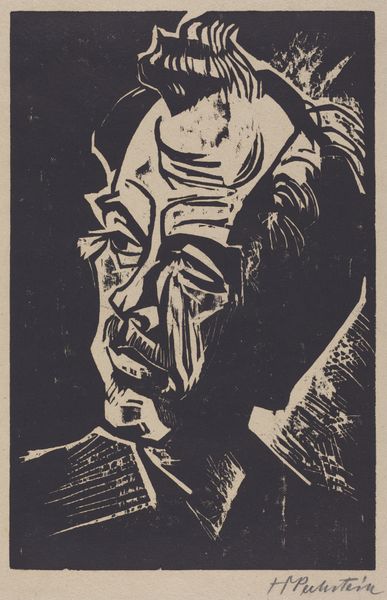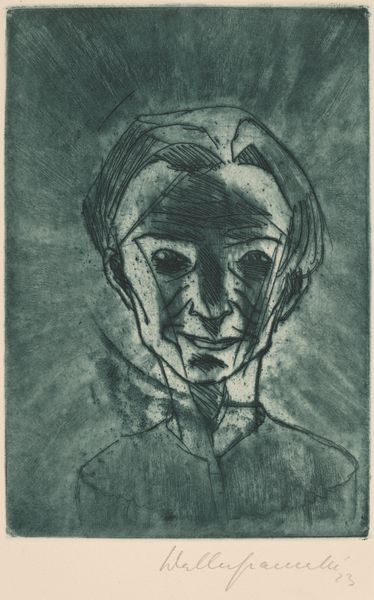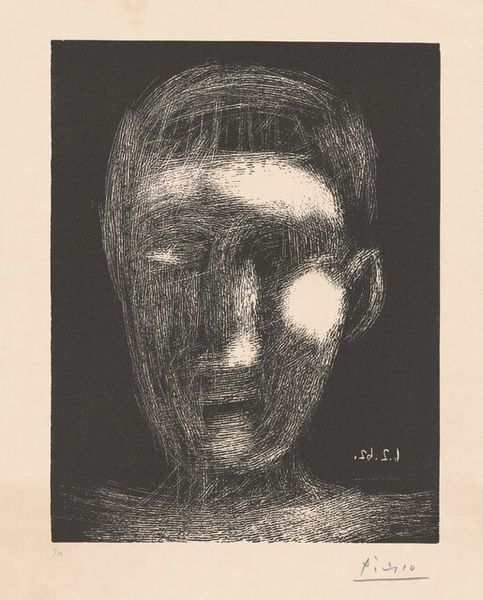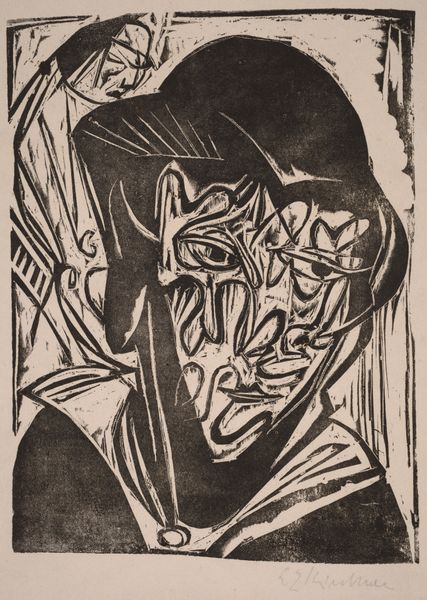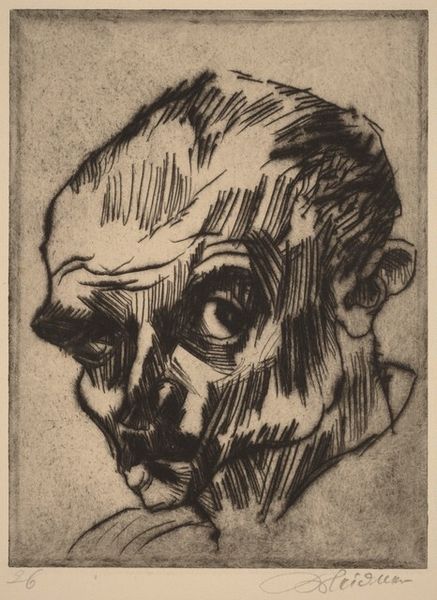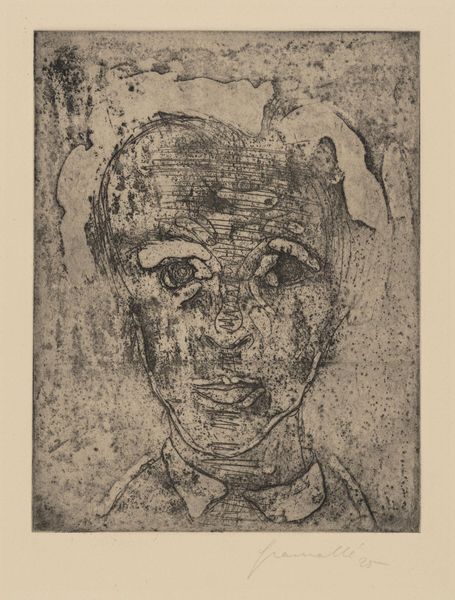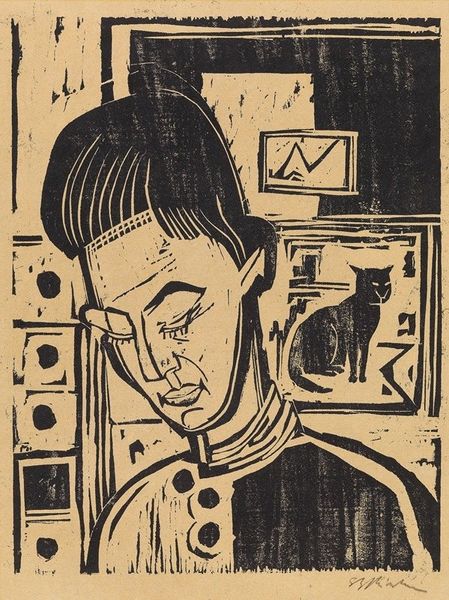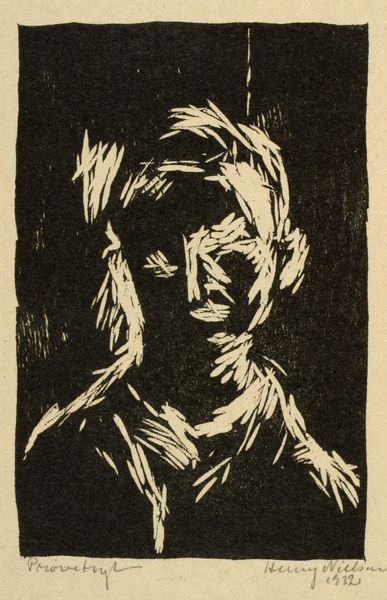
print, woodcut
#
portrait
#
ink drawing
# print
#
caricature
#
german-expressionism
#
figuration
#
expressionism
#
woodcut
#
portrait drawing
#
monochrome
Dimensions: image: 32.7 × 21.59 cm (12 7/8 × 8 1/2 in.) sheet: 49.69 × 34.93 cm (19 9/16 × 13 3/4 in.)
Copyright: National Gallery of Art: CC0 1.0
Editor: Here we have Edvard Munch's "Portrait of Inger Munch," made between 1908 and 1909. It's a striking woodcut print, rendered in monochrome. I’m struck by the rough texture and almost haunting quality. What can you tell me about this piece? Curator: This portrait offers a fascinating lens through which to examine the relationship between artistic labor and the commodification of the human image. Note the starkness of the woodcut medium – a conscious choice by Munch to embrace a more “primitive” form. It moves away from academic painting towards a readily reproducible format, thus entering the sphere of mass production and consumption. The figure, Inger, becomes an object, transformed through the act of carving and printing. Editor: So, you're saying the medium itself, the woodcut, is central to its meaning, even more so than, say, Inger’s emotional state? Curator: Precisely! The act of creating a woodcut, the physical exertion, the repetition involved in printing – all speak to the artist’s labor. We can see the tool marks and the grain of the wood itself becomes part of the image. These are direct traces of the production process, making the labor involved palpable. How might this affect the way viewers at the time, and we today, perceive the work, given our consumerist culture? Editor: That’s a great point; I hadn't considered the social implications of printmaking in that era. I always thought of woodcuts as more craft than fine art, somehow. Curator: And that’s the key tension, isn't it? Munch blurs the lines between "high art" and the more traditionally working-class realm of printmaking. What happens to the aura of a unique artwork when it can be reproduced and circulated widely? Editor: Thinking about the historical context, that definitely adds a new dimension. It's not just a portrait; it’s a statement about art's role in society and the impact of industrialization. Curator: Exactly. Analyzing the materiality and production process of "Portrait of Inger Munch" reveals how social forces influence the very fabric of artistic creation.
Comments
No comments
Be the first to comment and join the conversation on the ultimate creative platform.

